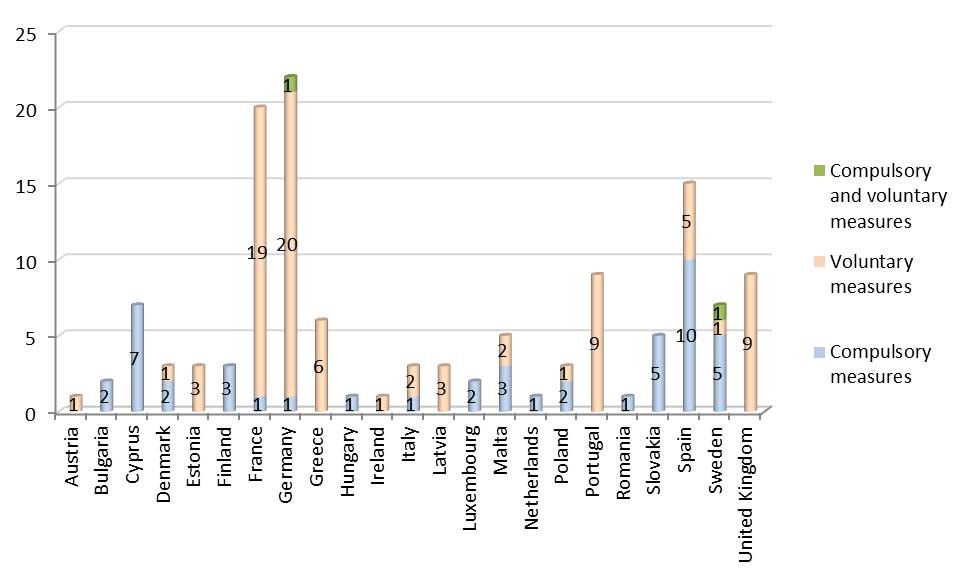Compared to the total number of notifications on dangerous products submitted during the month of July 2015 (170) the number of notifications was 22% lower in July 2016.
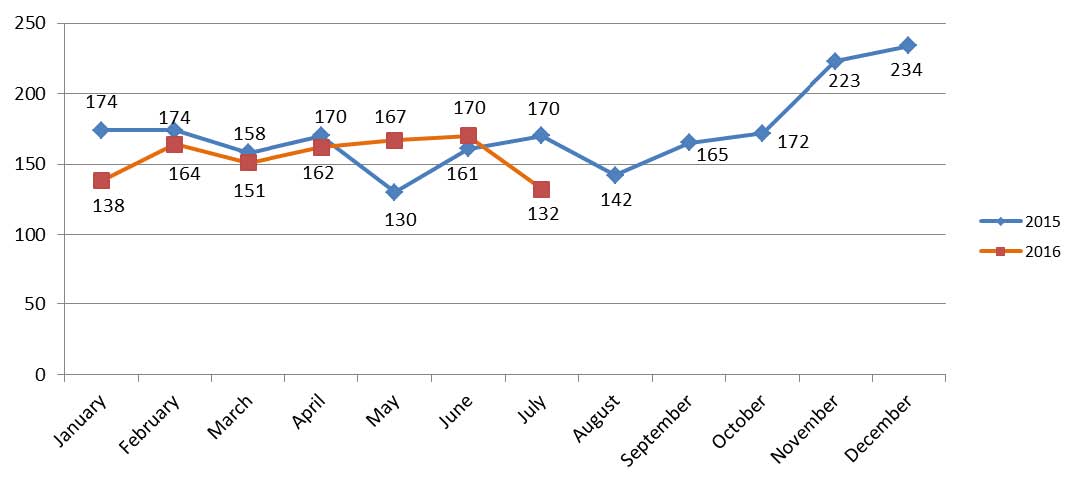
1. Notifying country
During the month of July, 23 EU Member States sent notifications on dangerous products through the RAPEX system.
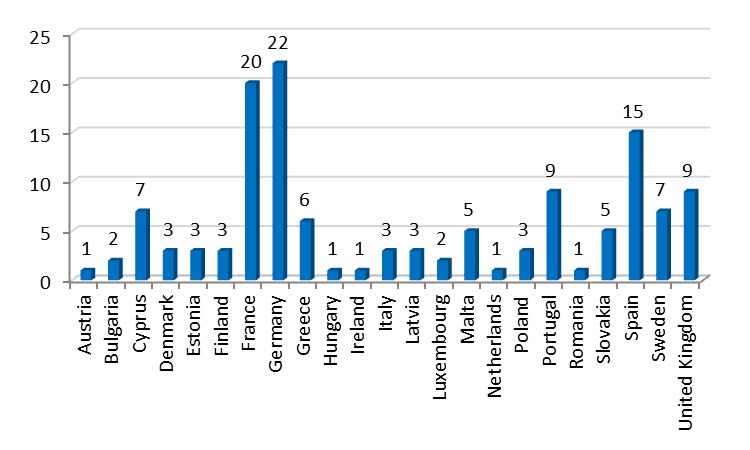
The five most frequently notifying countries accounted for 57% of the notifications:
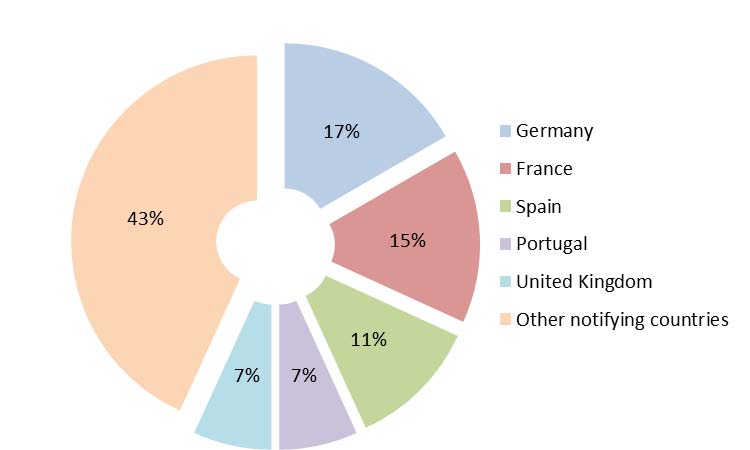
2. Product
The notifications validated in July covered 20 categories of products.
The five most frequently notified product categories accounted for 74% of all notifications:The five most frequently notified product categories accounted for 74% of all notifications:
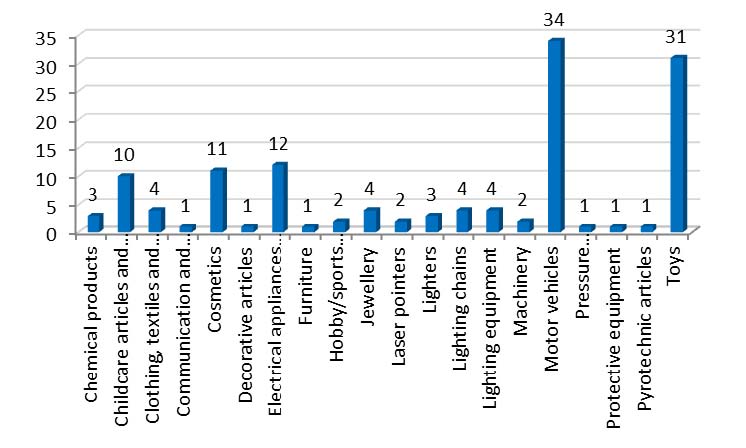
The five most frequently notified product categories accounted for 74% of all notifications:
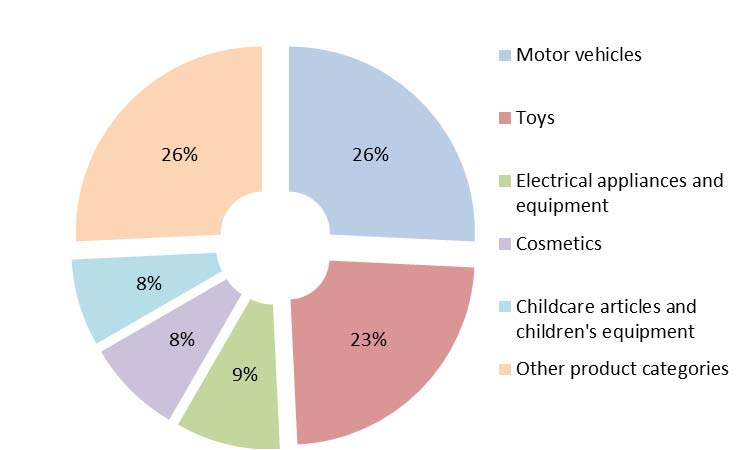
3. Type of risk
The notifications validated in July covered 14 different types of risk.
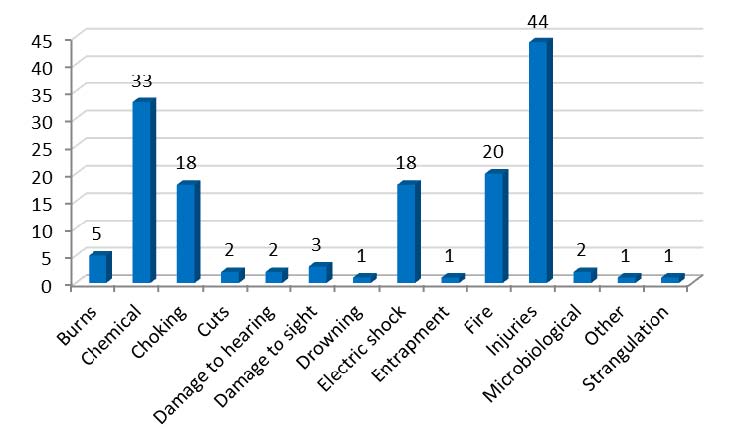
The five most frequently notified risk categories accounted for 88% of all notifications:
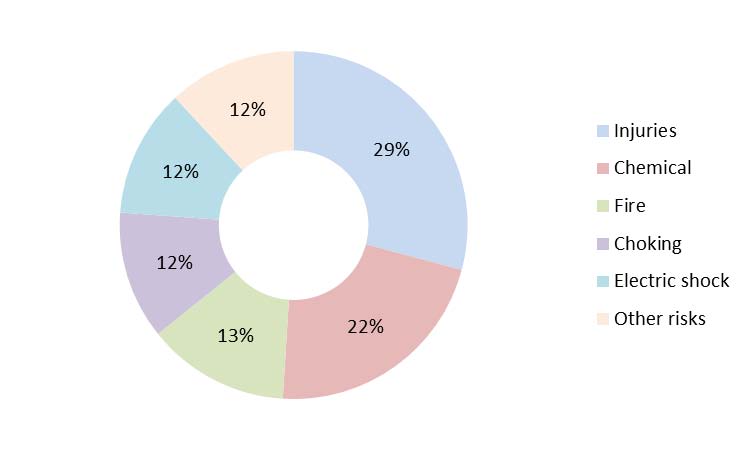
4. Country of origin
From the dangerous products notified in July, about half originated from China. 35 notifications (27%) concerned products originating from EU Member States. 33 notifications (25%) concerned products originating in other countries. In 4 notifications (3%) the information available did not allow for identification of the country of origin of the notified product.
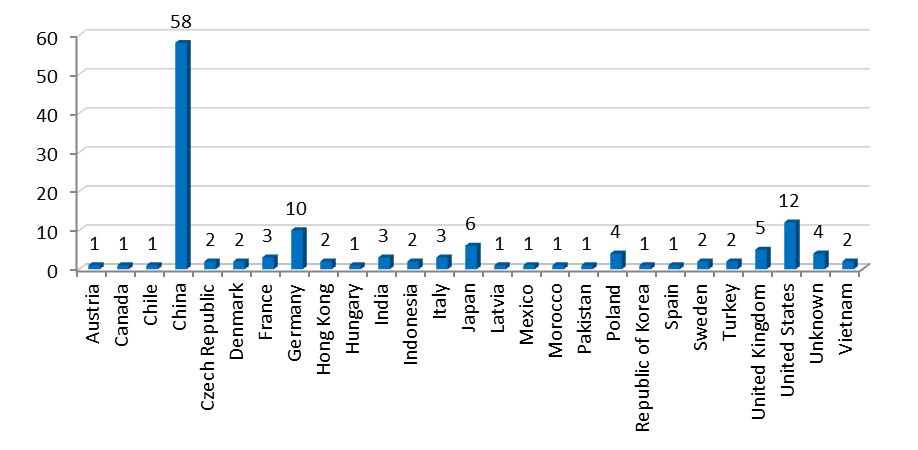
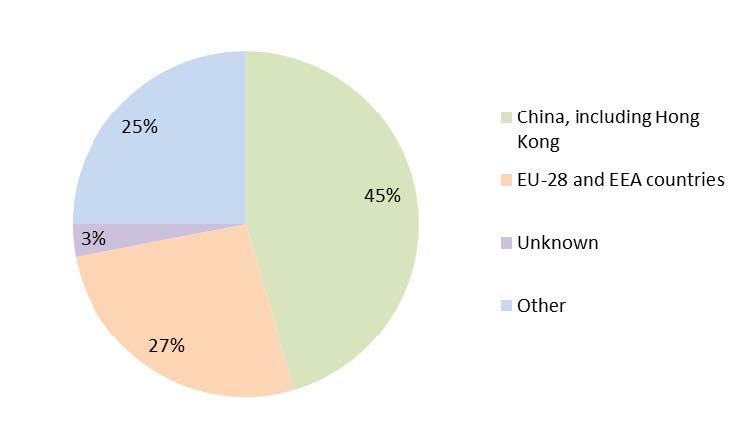
5. Measures adopted
In the month of July, 47 notifications (36%) were of compulsory preventive and restrictive measures ordered by national authorities (‘compulsory measures’). In 83 other notifications (63%), economic operators took preventive and restrictive measures on a ‘voluntary’ basis (‘voluntary measures’), i.e. they complied with their legal obligations without the formal intervention of a national authority. In two cases both kinds of measures were taken concerning the dangerous product notified.
It is very frequent that there is more than one measure adopted in relation to a notified product. That is, it is regularly the case, that when the authorities ordered a sales ban they have also ordered a withdrawal from the market.
There was only two cases where the compulsory measures were initiated by a customs authority, and this was in Slovakia.
Number of notifications by type of measure per country (absolute values):
